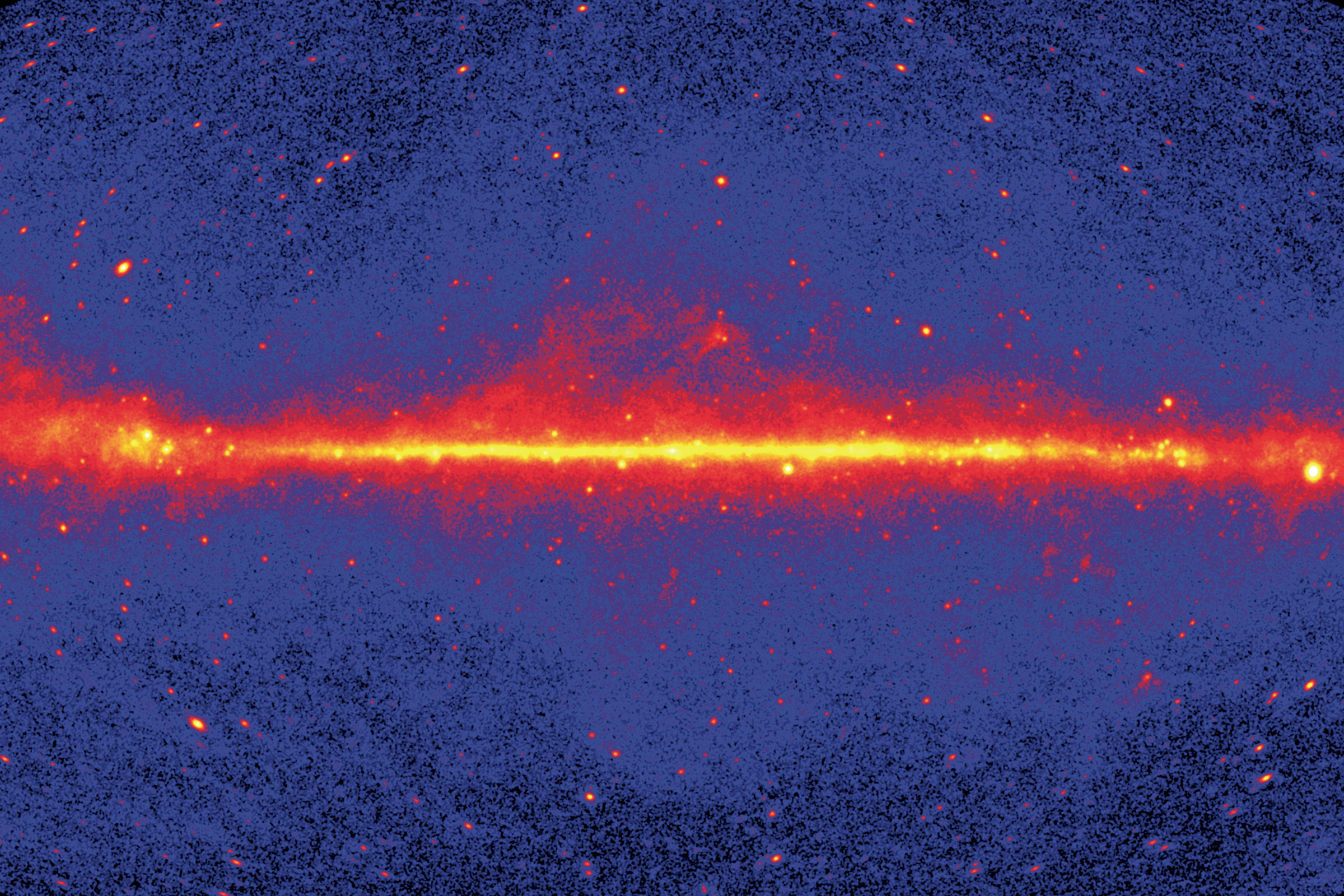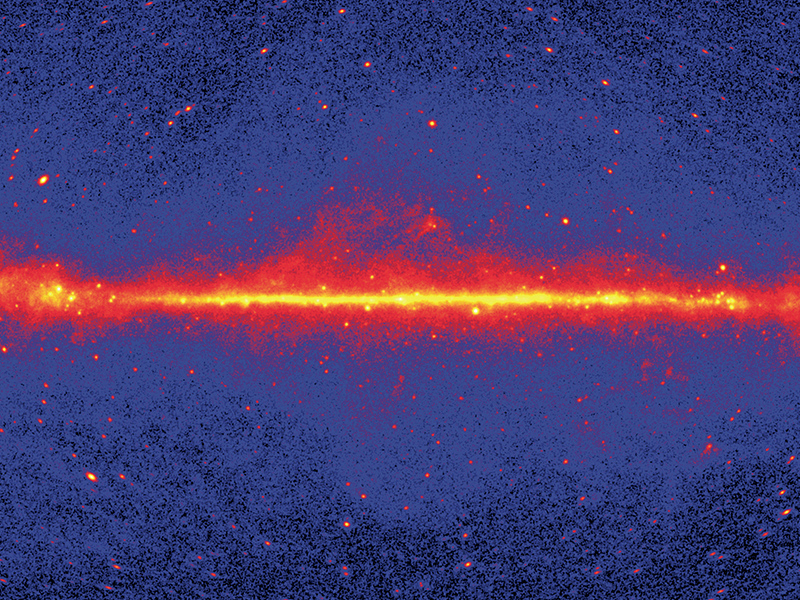STORY #3
Homing into the Mystery of high Energy cosmic Rays through Gamma-Rays
Masaki Mori, Ph.D
Professor, College of Science and Engineering
Where do cosmic rays originate,
and how do they reach us?
In August 2015, the cosmic ray observation equipment (CALorimetric Electron Telescope or CALET for short) mounted on the exposed experimental facility of the Japanese Kibo module of the International Space Station (ISS) began to operate.
CALET measures high-energy electrons and gamma-rays with unprecedented accuracy. This CALET Project is led by Japan as a joint international program with Italy and the U.S. The aim of the program is to use CALET to measure the amount of energy in the particles flying through space, determine the particle types and their trajectories to determine where such high-energy cosmic rays (their electrons, protons, and nuclei) came from, to pinpoint its source in addition to discovering the mechanism behind the acceleration and propagation of cosmic rays*, and finally to solve once and for all the reality and identity of dark matter. Masaki Mori, one of the leading figures in the field of high-energy astrophysics using gamma rays also participates in this project along with the students in his lab.
“For the longest time, light that our eyes can detect (visible light) was used to observe space. However, in recent years, with the development of technologies that can capture light that our eyes are unable to detect, such as radio waves, infrared-rays, ultraviolet-rays, X-rays, and γ (gamma)-rays, we are now able to observe particles such as neutrinos, electrons, protons, and atomic nuclei that were hitherto too difficult to observe,” Mori explains. With these new capabilities, the various phenomena that were considered a mystery may potentially be unraveled. One such mystery concerned where cosmic rays originate.
According to Mori, we know that cosmic rays reach Earth, but it is thought to be quite difficult to determine where and how they were generated. This difficulty stems from the fact that most cosmic rays carry a charge. This means that the magnetic fields in outer space would bend the trajectory of the rays and make it impossible to measure from what direction they had initially come. However, gamma-rays that do not hold a charge can travel straight through outer space. Thus, if they were captured, it might become possible to determine the origin of the cosmic rays. What Mori is focusing on is high-energy gamma-rays ejected from supernova remnants, pulsars, and active galactic nuclei. “In high-energy celestial bodies, such as the supernova remnants left after heavy stars have massive explosions at the end of their evolutionary stages, pulsars—celestial bodies that emit pulses periodically—and the active galactic nucleus which has massive black holes as its energy source, particles such as electrons and protons are accelerated to extremely high energies. When those accelerated particles bump into other radiations and materials around them, gamma-rays are generated. Then how would they accelerate the particles to such high energy that humans are incapable of generating? We would like to discover that mechanism,” Mori shared. Mori is trying to approach this answer by studying the observation data of CALET, which is capable of exploring the high-energy ranges.
*Cosmic rays: High energy particles (protons and electrons) that fly across outer space
Space, as viewed through light with the Milky Way galaxy at its center
Axel Mellinger, PASP 121, 1180-1187 (2009).
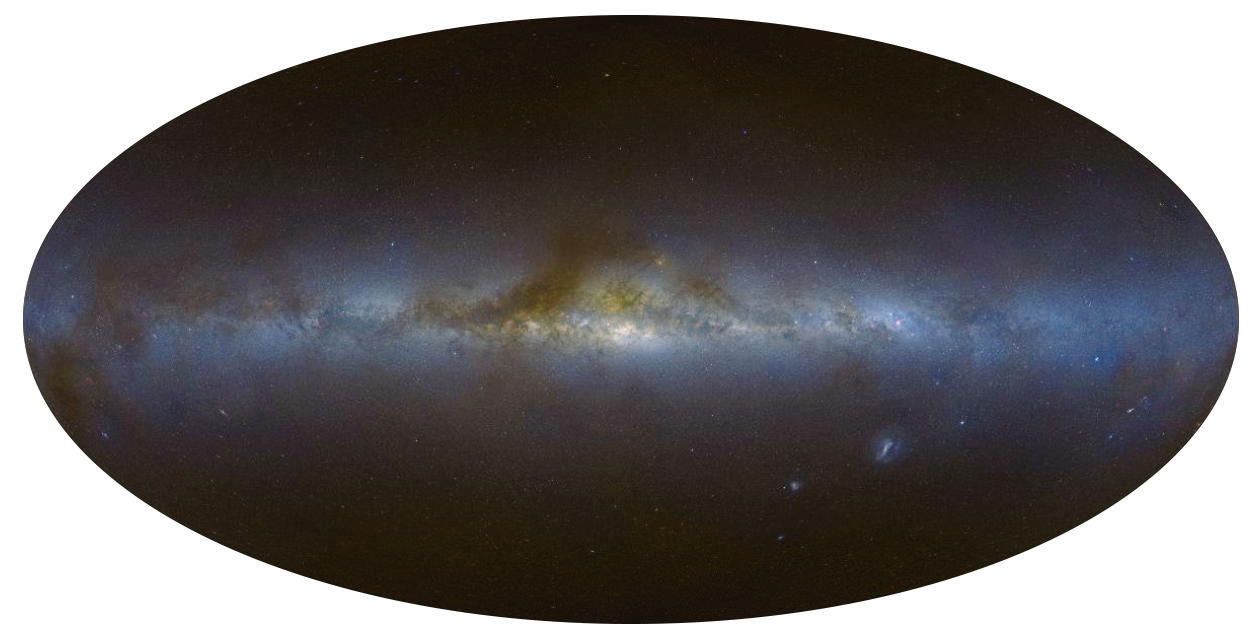
When this is observed through gamma-rays, it looks like this image
(Image taken by NASA’s Fermi Gamma-ray Space Telescope)
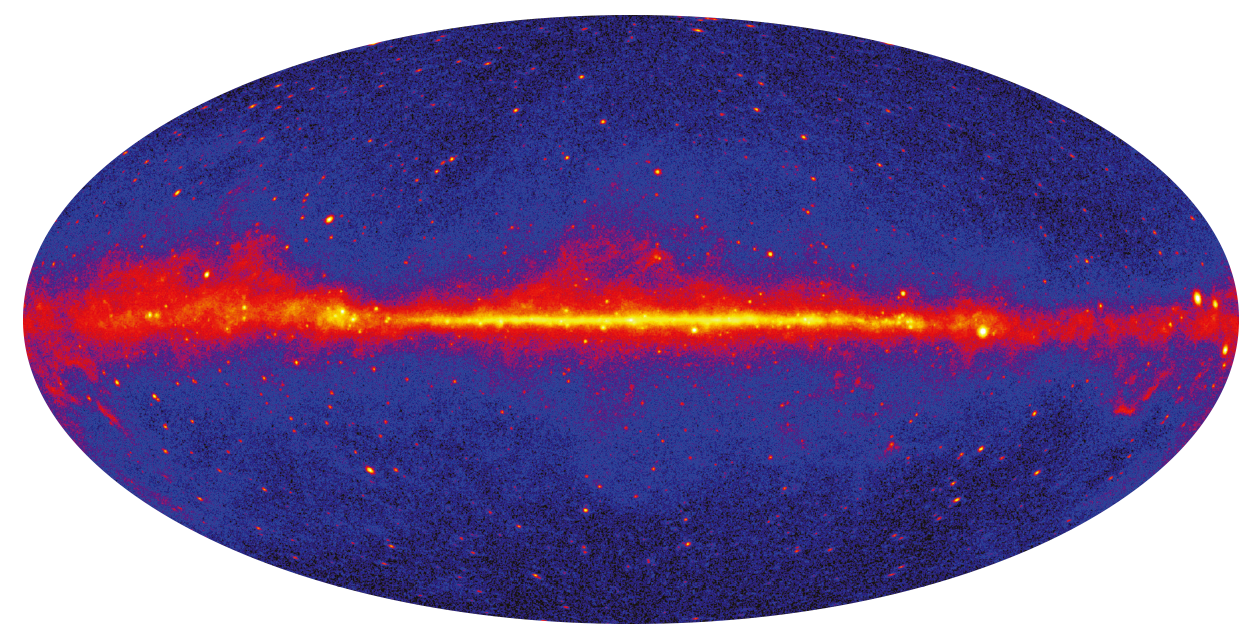
Since gamma-rays ejected from celestial bodies are blocked by thick layers of the Earth’s atmosphere, they cannot be directly observed from the Earth’s surface. For this reason, observations have been made outside the atmospheric layers using a detector mounted on a satellite. For years, using the observation data from the LAT detector mounted on the Fermi Gamma-Ray Space Telescope launched in 2008, Mori has been analyzing, among others, X-ray binaries, supernova remnants, active galactic nucleus, and pulsar nebulas.
The CALET Project has continuously monitored gamma-rays in the high energy range of over 1 GeV for about six years now. “So far, we have detected 22 point sources, and we are finding energy spectra that confirm what has been observed using Fermi,” says Mori. He has also made some high-impact findings as well. One such finding came from his analysis of the gravitational wave detected in 2017 by the Laser Interferometer Gravitational-Wave Observatory (LIGO) in the U.S. against CALET’s observation data from the same period. “As to how that detected gravitational wave was formed, the most prominent theory of that time was that it was caused by the collision of black holes. If that is true, then a major suction would have occurred, and thus no gamma-rays would have been released. As a result of our analysis, we found no significant increase of gamma-rays, which corroborated and confirmed our prediction,” Mori explained.
In addition, they also succeeded in the observation of gamma-ray radiation emitted only briefly from the flares of the active galactic nucleus CTA102. According to Mori, the flares are thought to be emitted from near a black hole. By analyzing the temporal variations and energy spectrum, we would be getting one step closer to determining the source of the gamma-rays.
Furthermore, Mori is homing into one of the biggest mysteries to this day: the real identity of dark matter. Dark matter is an unknown matter that does not emit light. While its existence is known, its observation is difficult. For this reason, the substance is yet to be clarified. It is thought that gamma-rays are released when dark matters collide and go through a process called pair annihilation. Mori is trying to find the gamma-rays that point to the existence of dark matter through CALET’s observation data. What is the identity of this unknown matter? Mori and others are continuing to challenge and push the boundaries of the space science frontier.
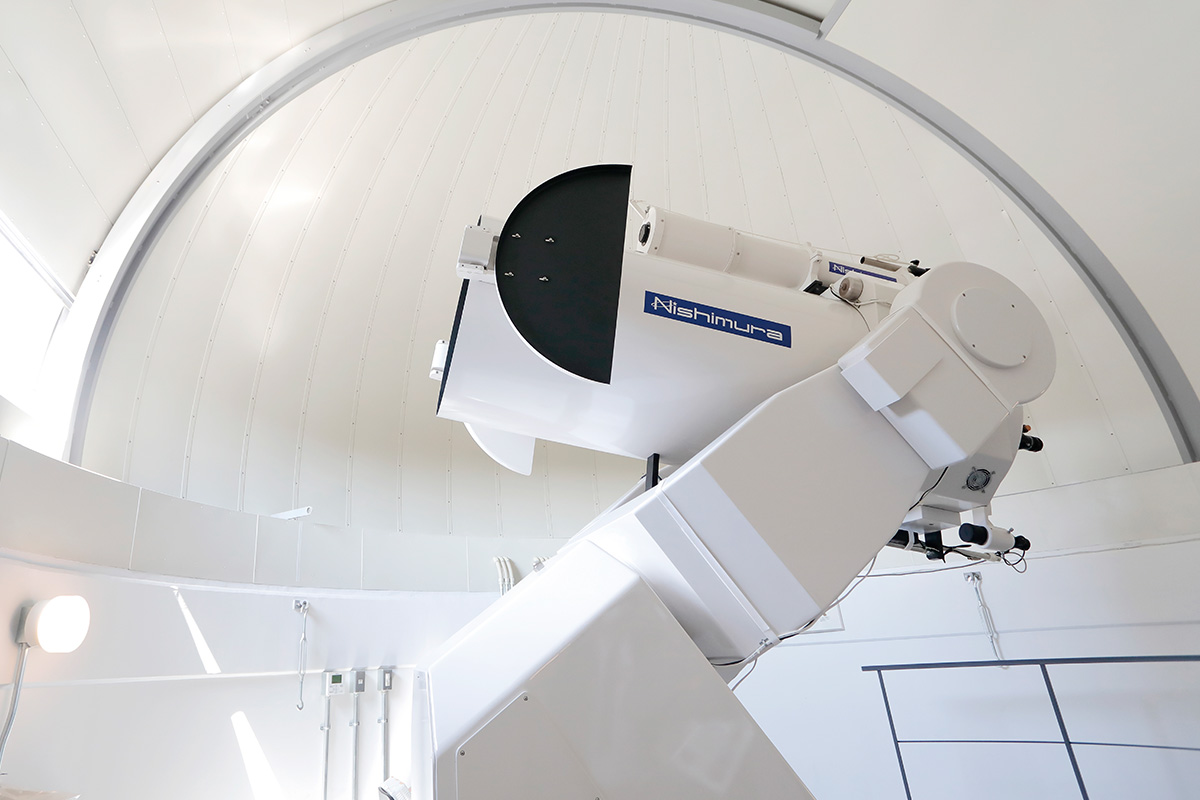
Ritsumeikan Astronomical Observatory at the Biwako-Kusatsu campus. A 60-cm-diameter reflective optical astronomical telescope with a cooled CCD camera as a detector is installed.
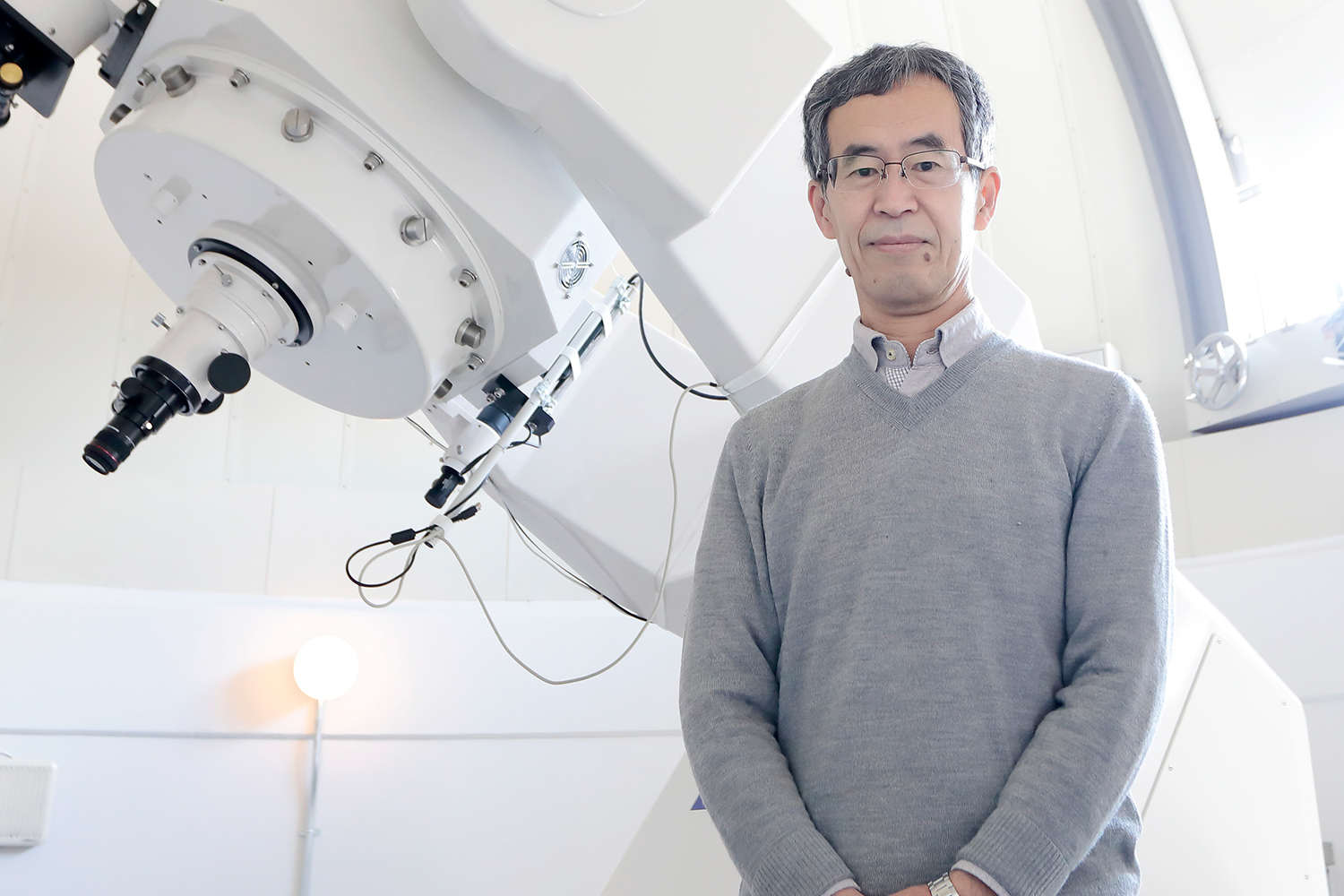
- Masaki Mori, Ph.D
- Professor, College of Science and Engineering
- Specialties: Cosmic ray physics, High energy astrophysics
- Research Themes: Experimental research of cosmic ray physics, Astrophysics research through the observation of high energy gamma-rays
